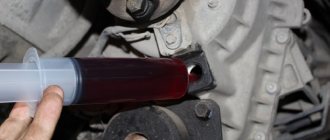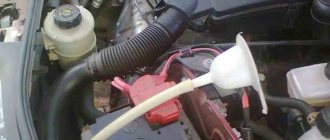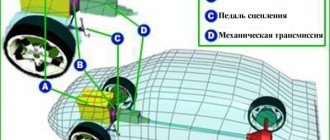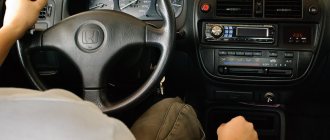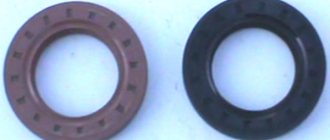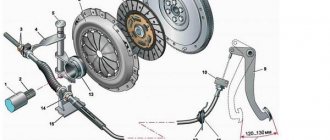When you get behind the wheel for the first time, even a confident person gets nervous. Therefore, it is important to know theoretically how to properly learn to drive a manual car. Then the instructor’s explanations will not seem like something supernatural. The SAI Driving School will talk about how to learn to drive a manual car, and we will study all stages of movement and braking.
Important Notes
Before you get behind the wheel, you need to study the structure of the car, the traffic rules, and find out where the controls are located. Information about possible malfunctions and rules for providing first aid will not be superfluous. Anything can happen on the road. After studying the topic of driving, you can begin practical lessons.
How to start a car for beginners: step by step
Before moving off, the driver must do the following:
- Visually inspect the vehicle, check the wheels, headlights, dimensions, and eliminate oil and fuel leaks.
- Place the seat in a comfortable position and adjust the side mirrors.
- Fasten your seat belt and check the seat belts of passengers.
After this, you can further learn the basics of driving for beginners using mechanics. Learn the pedals and their locations. For beginners, the car often stalls, because... they don't sense the vehicle. The pedals are arranged in the following order:
- clutch;
- brake;
- gas.
The right foot presses the gas and brake, the left foot presses the clutch. The clutch must be pressed all the way, and the gas and brake must be pressed carefully, because they are sensitive to influence. Next we will talk in detail about how to properly use a manual clutch.
What is a clutch and why is it needed?
From a school physics course, we know that grip means to grip something due to the force of friction; without grip of our feet on the road, we would not be able to walk, and without grip of our hands on other objects, everything would slip out of our hands.
Without delving into the mechanisms of the car, we will not touch on the technical part. In simple terms, when we press (you don’t just need to press the clutch, but press the pedal all the way with your foot) the clutch pedal, the torque from the engine is not transmitted to the wheels and they do not spin. In order for the car to move, we need to set the wheels in motion, and for this we must transmit torque to the wheels.
This is why the clutch disc exists, when we smoothly release the pedal, the clutch disc approaches the wheel, and in order to start moving, we need the disc to engage with the wheel and put it into action.
How to get moving
Before moving off, you need to go through all the points written above. Perhaps you want to know how to quickly learn to drive a manual car, and it seems to you that you don’t need to waste time on the little things. In the future, preparation will not take much time. But a beginner should develop the right habits.
After preparation, follow the following algorithm of actions:
- Press the clutch pedal;
- Remove the car from the handbrake;
- Engage neutral if the lever is not in the desired position, and the indicator on the control panel will go out;
- Release the clutch;
- Press the clutch pedal all the way down;
- Engage first gear;
- Smoothly press the gas pedal and after a couple of meters, simultaneously release the clutch.
If the car stalls, start starting the car from the first point. Driving for beginners with a manual from scratch does not always go smoothly and that’s normal. It is advisable to conduct the first lessons on a special platform so that you can stop the car without damage. Repeat the exercise until the movement becomes smooth and the engine stops stalling.
Understanding manual transmission gears
A manual transmission differs from an automatic transmission in that it requires constant driver control, that is, independent gear shifting. Basically, vehicles have 4 or 5 speeds, and in addition to them, rear. To understand the location of each, you need to know their purpose.
Gearbox: Beginner's Guide
- Every time the movement begins with squeezing the clutch pedal, thus it becomes possible to switch to another speed. It is permissible to enter the required gear when the clutch is fully depressed.
- When neutral gear is selected, when squeezing the gas, the car will not move. When the selector is in this position, it is possible to select the desired speed, including reverse.
- The second gear is considered to be the working gear. It is convenient to move on sloping terrain, as well as to drive in traffic jams. The first is usually used to start the journey, then, accelerating, they move to the second. Having gained even greater speed and revolutions, you can move to third.
- It is more difficult for inexperienced drivers to learn how to drive a manual car in reverse gear. Using it, acceleration occurs faster than with the first one, but still, driving the car often is therefore very dangerous.
Before driving your car into the city, you need to have a good understanding of where each gear is located. Theory is good, but in this case, practical skills are required. After all, while driving, you cannot be distracted and look at the selector, choosing the desired gear, since this is unsafe. At first, you can train in a car, in a non-working state, and bring the gear shifting to automaticity.
How to brake
Gradually learning how to learn to drive a manual car, you should not only be able to start, but also brake. The brake pedal is sensitive, so you need to press it smoothly. To brake, go through the following steps:
- With your left foot, press the clutch pedal all the way;
- Press the brake pedal with your right foot;
- After stopping the car, put the gearshift lever in the neutral position;
- Release the clutch pedal;
- Raise the brake handle;
- Take your foot off the brake pedal.
If circumstances force you to brake sharply, do not depress the clutch.
How to start downhill?
This expression means that you need to start moving from the mountain. It is easier to start downhill than in a straight line. To do this you need:
- While holding the brake, depress the clutch and engage the gear.
- Release the brake.
- Smoothly release the clutch and start moving.
There is no need to step on the gas. Under the influence of gravity, the car itself will begin to coast. In this case, the clutch can be released faster.
Gear shift
The gearbox for beginners seems somewhat complicated, although shifting is easy to understand under the guidance of an instructor. Gears should be changed with the clutch pedal depressed. You can tell when to upshift or downshift by looking at the engine sound, speed, or rpm on the tachometer.
To determine the need to switch by sound, you need to spend a lot of time driving. Only experienced drivers with many years of experience can change gears using it. For beginners, it is better to focus on speed. There are 5 gears, switching between them occurs depending on the speed of the car. It is important to ensure that the lower speed limit matches the gear.
- 1 - up to 20 km/h;
- 2 - 20-40 km/h;
- 3 - 40-60 km/h;
- 4 - 60-90 km/h;
- 5 - 90 km/h or more.
After the car has started moving, put it in first gear, then switch to second. At the same time, press the clutch pedal, take your foot off the gas pedal and engage second gear. After this you can release the clutch. When moving from one gear to another, pressing the pedals must be repeated step by step each time, as described above.
Gradually, driving a manual car will become commonplace for beginners, and all movements will be performed automatically.
Mastering a manual transmission in ten steps
Mechanical transmission and its advantages
In recent years, the demand for cars with manual transmission has become somewhat lower.
Drivers increasingly prefer cars with automatic transmission, citing the fact that they are much easier to drive. However, no one is going to give up classical mechanics yet, since it is still superior to automatic transmissions in several ways. Firstly, the mechanics are much more reliable and durable, and in the event of a breakdown, its repair will cost less than repairing an automatic transmission.
Secondly, driving a car with a manual transmission in winter is much safer than driving a car with an automatic transmission. Thirdly, cars with manual transmission are somewhat cheaper than their counterparts with automatic transmission, and during operation they are more economical in terms of fuel consumption.
So, you've decided to buy a car with a manual transmission, but you have no idea how to drive a manual transmission. In this article we will tell you step by step about the main nuances of driving a manual car.
Step one: manual transmission
https://www.youtube.com/watch?v=tvg6FLlGY7E
When driving a car with a manual transmission, the driver is required to independently change gears at the most appropriate moment. Most manual transmissions have 4 or 5 speeds (rarely 6 or even 7) and one reverse gear. To correctly switch between them, the driver needs to know the following:
- Clutch pedal. By pressing this pedal all the way, a special mechanism is activated in the gearbox, after which the driver can easily switch from one speed to another using the gear shift knob. If you press the clutch pedal somehow, the gears will be switched with a characteristic grinding and crunching noise, which can subsequently lead to a breakdown of the manual transmission.
- Neutral gear. If you turn on the neutral gear while the engine is running, the torque from the latter will not be transmitted to the wheels, which means the car will not move. After moving the lever to the neutral position, you can easily switch to any gear.
- Second gear. In most cases, the first gear is used exclusively for starting, but the second is a kind of “workhorse”. By activating it, you can easily slide down a steep slope or confidently maneuver in a dense stream of city traffic.
- Reverse gear. This gear is different from other speeds in a manual transmission. It has the greatest range of operation. By selecting it, you will be able to accelerate faster than in first gear. However, driving in reverse for a long time is not recommended, as this can lead to breakdown of the manual transmission.
Note that each speed has its own maximum torque, which can be achieved using the gas pedal. When driving a car with a manual transmission, you will feel every speed, which not only adds drive, but also contributes to better control over the car.
Step Two: Positioning Gear Speeds
Since while driving you need to be completely focused on the road, when changing to a manual, the driver needs to remember the location of all the gears indicated on the shift knob.
For beginners, it is recommended to turn to experienced drivers and, sitting in the front passenger seat, observe from the side how to synchronously press the clutch pedal and change gears. It is also worth paying attention at what speeds the driver switches from one gear to another.
It is likely that during the first days of driving a manual car, you will still be looking for the gear lever with your eyes and remembering which position corresponds to a particular speed. Over time, this will pass and you will learn to change gears automatically.
Also, beginners tend to make mistakes when choosing the optimal speed for switching from one gear to another. It’s important not to fuss here, trying to focus on the sound of the engine. So, if you engage a gear that is too high, the engine speed will be low, and the car will not want to pick up speed.
In this case, you need to switch to a lower gear. If the engine speed is very high, then you are driving in a low gear, and to unload the transmission it is worth switching to a higher one.
If the car has a tachometer (indicates the number of engine revolutions), the driver can switch speeds based on its indicators. Of course, each model is individual and requires a special gear shift order, but in most cases you can switch from one speed to another when you reach 3,000 rpm.
You can also switch from one speed to another using the speedometer. So, the first gear is suitable for driving at speeds from 1 to 25 km/h, the second - from 25 to 50 km/h, the third - from 50 to 70 km/h, etc. However, these are far from exact values, and the more powerful your car is, the more these ranges will differ upward.
Step three: starting the engine
Before starting the engine of a car with a manual transmission, you must first depress the clutch pedal and move the gear lever to neutral. It is strictly forbidden to turn on the vehicle's engine while the gear is engaged, as this will lead to uncontrolled movement of the vehicle, which will create a potentially dangerous situation.
After starting the engine, give it time to warm up. Note that in the cold season, in order to warm up the oil frozen in the transmission, it is recommended to hold the clutch pedal for several minutes after engaging the neutral gear.
Step Four: Proper Use of the Clutch Pedal
https://www.youtube.com/watch?v=rAkN_mUw42g
The clutch is the most important mechanism that allows you to smoothly change from one gear to another. As noted above, in order to prevent damage to the manual transmission, the clutch pedal must always be fully depressed. You should press the pedal exclusively with your left foot, and use your right foot to press the gas and brake pedals.
At first, it is difficult for novice drivers to release the clutch perfectly after changing gears, but over time you will gain the necessary experience. Well, at first, beginners are advised to release the clutch smoothly. This will allow you to feel when the torque begins to be transmitted from the engine to the wheels.
If the clutch pedal is not fully pressed, it is recommended to avoid unnecessary acceleration. Also, you should not leave the clutch pedal pressed for more than two seconds, so even at traffic lights, use neutral gear.
Step five: competent coordination of actions
To learn how to drive a manual car, well-coordinated and well-coordinated actions are required. For example, let's look at the switching process for 1st and 2nd gears. To begin with, you must depress the clutch pedal all the way, and then switch the gear stick to first speed.
Then you need to smoothly release the clutch pedal while slowly pressing the gas pedal. When the clutch pedal is somewhere in the middle of its travel, you will feel the torque begin to be transmitted from the engine to the wheels.
By fully releasing the clutch pedal, you can accelerate to about 25 km/h, after which you will need to switch to second gear. To do this, you will need to depress the clutch pedal all the way again, shift the gear stick to second gear and smoothly, without releasing the clutch pedal, add gas.
Step Six: Downshifting
Downshifting (from the English downshifting) is a transition to a lower gear. With its help, you can not only slow down the car, but also choose the most suitable speed for driving.
Downshifting can be used in situations where you need to reduce speed without using the brake pedal (for example, on wet or icy road surfaces). In this regard, a manual transmission is much safer than an automatic one, since it gives the driver complete control over the vehicle.
For example, let’s look at a situation where using downshifting you can stop a car moving at a speed of 70 km/h:
- You need to press the clutch pedal and shift the gearbox to 3rd speed, while moving your right foot from the gas pedal to the brake pedal.
- To avoid engine running at high speeds, you should smoothly release the clutch pedal.
- Before stopping the car, you must depress the clutch again.
- You should not use first gear as a downshift.
Using this method, you can stop the car much faster and safer than using the brake pedal.
Step Seven: Reverse Gear
You should be especially careful when engaging reverse gear. If engaged incorrectly, the gear shift lever may jump out, so it is strictly forbidden to engage reverse gear until the vehicle has come to a complete stop.
Note that for some cars with a manual transmission, to engage reverse gear you must first press a special button on the gearbox lever. It is also worth remembering that the reverse gear is designed for a fairly high range of operation, which means that in order to avoid a sharp increase in speed, the gas pedal must be pressed smoothly, without unnecessary effort.
Step eight: we start up the hill on the mechanics
Due to the terrain, there are practically no perfectly flat roads in the world, so the driver has to drive up and down slopes over and over again. If you do not use the brakes, then when stopping in such places the car will simply roll downhill or downhill. It is also noticeably more difficult to start on inclined roads, so it is better to practice in advance in an area that is familiar to you.
When you stop while climbing a slope and put the car on the hand parking brake, shift to neutral gear. Next, you need to depress the clutch pedal and engage first gear.
Smoothly releasing the clutch and pressing the gas pedal, at some point you will feel that the car is trying to move. At this moment, you need to remove the handbrake and add a little more gas in order to begin a confident upward movement.
In the future, you will need to stop using the handbrake when starting uphill by quickly moving your foot from the brake pedal to the accelerator.
Step Nine: Parking
After parking and turning off the car engine, you need to depress the clutch pedal and engage first gear. This will prevent your car from rolling away. As an additional insurance, you can also raise the parking brake lever (if the handbrake is electronic, then you need to press the button).
Remember that when you return to the car, you must first shift the gear to neutral and only then start the engine.
Step Ten: Practice
Many newcomers who have just received their license are afraid to get behind the wheel of manual cars, considering their operation difficult and confusing. To overcome this fear, it is recommended to practice on special sites. The absence of other cars will allow you to slowly understand the nuances of driving a car with a manual transmission.
After just a couple of such lessons you will feel confident, after which you can try to practice on public roads. It is recommended to do this in the early morning or late evening, when traffic on the roads is not so intense.
Conclusion
At the moment, there is an opinion among the younger generation of motorists that a manual transmission is outdated and not as comfortable as an automatic transmission. This is not entirely true.
The manual is still one of the most reliable transmissions, and despite some reduction in driving comfort, in return it provides complete control of the car. That is why many sports models are still equipped exclusively with manual transmission.
How to drive in reverse
Controlling mechanics for beginners will not be difficult if you practice each skill repeatedly. The same rule applies to mastering reverse gear. Before reversing, select a gear, depending on your vehicle. The algorithm of actions is as follows:
- Depress the clutch, start the engine;
- Engage reverse gear;
- Lower the brake lever;
- Smoothly press the gas and release the clutch.
After performing these steps, the car will go backwards. The driver should control the direction of travel. Some look in mirrors, others prefer to turn around their whole body. The first option is safer, although it is more difficult to master. In the course we learn how to drive a car with a manual transmission and control reverse movement using two methods.
Precautionary measures
Put on your seat belt. As a final safety precaution, fasten your seat belt before performing any reverse maneuver using your mirrors. The same applies to driving in reverse.
IMPORTANT! Make sure the seat belt is positioned over your shoulder as specified by the manufacturer. Proper use of seat belts can help prevent injury in the event of an accident.
To do this, simply use the brake. Driving in reverse is not that difficult if you follow the steps mentioned above. As long as you monitor your vehicle at all times and drive slowly, you should have no problem transporting your vehicle to the location where you need to park or stop. Be sure to make sure your mirrors and brakes are working properly.
How to park
A car parking exercise is offered at the end of the lesson. Parking your car is not difficult, but you need to remember about the possibility of rolling back. To avoid this, follow the following algorithm:
- Press the clutch pedal and then the brake pedal;
- Move the gear lever to neutral, release the clutch;
- Turn off the engine;
- Put the vehicle on the handbrake;
- Take your foot off the brake pedal.
To avoid rolling back, especially in winter, we recommend putting the car in first gear. On a slope, turn the wheels so that if you accidentally move, they hit the curb or bring the car to the side of the road.
Learning to coordinate actions
A car with a manual transmission, when driven skillfully, gives the driver a lot of drive. After all, it provides the opportunity for sharp acceleration, which is not available to a car with an automatic transmission. Driving lessons for women help to bring this action to automaticity, clearly coordinating manipulations with the controls. Let's give an example of the correct algorithm when driving at 1-2 speeds.
Depress the clutch pedal all the way and engage first gear. Gradually slowly release the clutch, at the same time equally slowly and smoothly press the gas pedal. When the clutch pedal reaches approximately the middle, you will probably feel that the torque is transmitted 100% to the wheels and the car begins to move. Smoothly release the clutch and continue to gently press the gas, pick up a speed of about 20 km/h. Now is the time to engage second gear. Release the gas, fully depress the clutch and move the manual transmission lever to second gear, release the clutch and gradually increase the gas.
Emergency maneuverability
Typically, manual driving lessons for beginners are conducted in a calm environment and on a flat surface. However, on a real road, surprises occur after every turn. Therefore, a beginner should practice emergency maneuverability skills so as not to lose his head in a dangerous situation. The exercises are as follows:
- braking - the driver accelerates and brakes sharply;
- avoiding obstacles - tires are laid out on the site and the driver must go around them at the last moment;
- recovery from a skid - the driver brakes sharply on a slippery surface.
While doing the exercises, remember how the car behaved in a critical situation. Manual driving training takes place at the SAI driving school in Yekaterinburg. We offer in-person and distance learning for driver's licenses. Visiting hours are morning and evening. Call and fill out an application for driving courses!
Let's sum it up
Independent practice, many hours of training or the help of more experienced car enthusiasts will immediately affect the results of a novice driver. To begin with, start learning how to start and drive correctly from vacant lots and race tracks, gradually moving to public roads. Master permanent routes on empty roads starting early in the morning. Gradually shift the time to the actual road conditions in which you will travel in the future.
Learn to relax, as manual driving does not tolerate fuss. A certain degree of comfort, which will have to be sacrificed when switching from an automatic to a manual, is rewarded with the pleasure of feeling full control over the car and invaluable driving experience.
That's all we wanted to say on this issue. In the article, we tried to cover in detail the topic of how to move away with a manual transmission step by step for dummies, and also touched upon other issues related to driving a car. We hope that this information was useful to you. We will be happy to answer your questions in the comments.
New articles
- Changing gears and starting to drive a manual transmission for beginners
- Driving on a race track: useful tips and tricks for novice drivers



